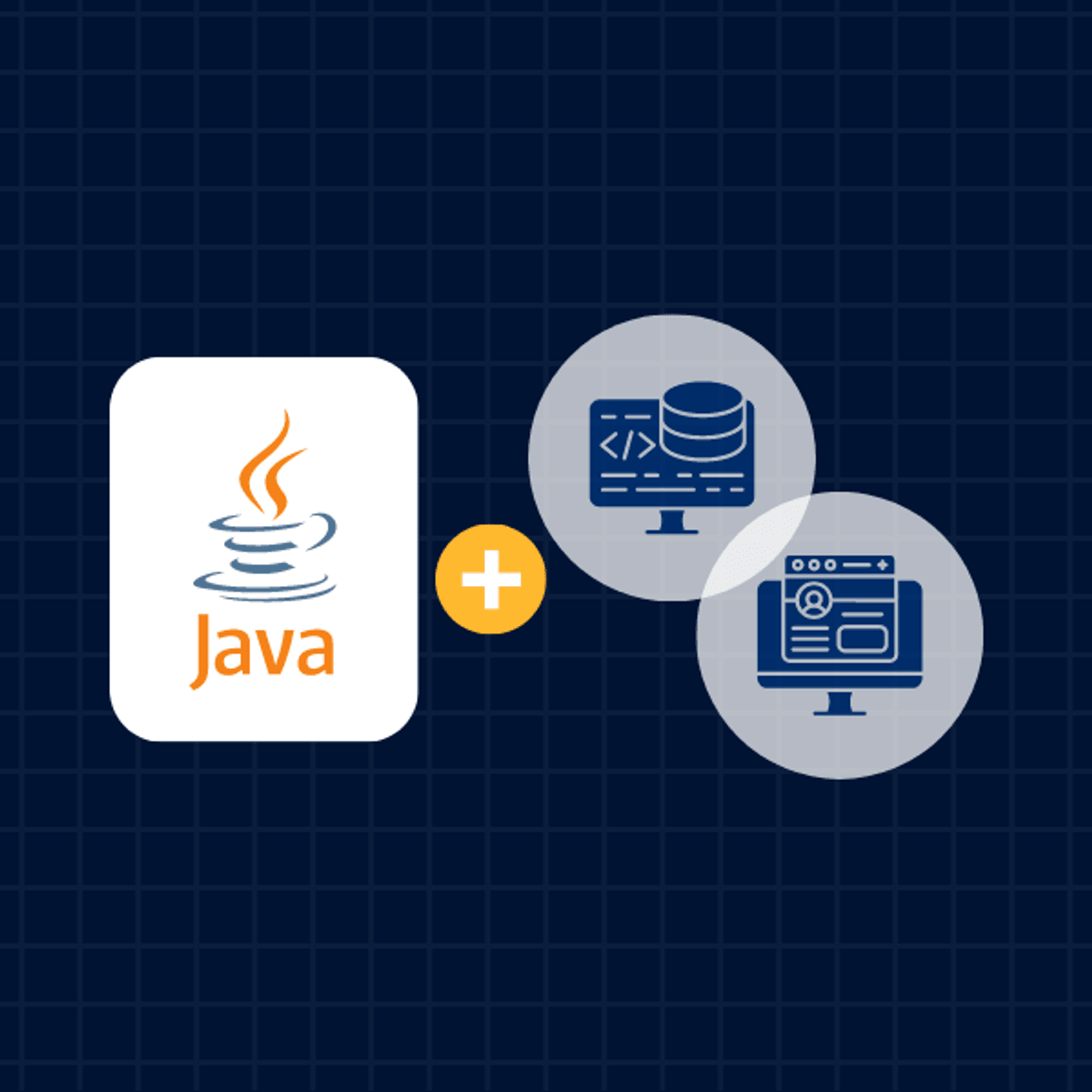JavaScript Developer
Embarking on a Career as a JavaScript Developer
JavaScript is a cornerstone of modern web development, a versatile programming language that empowers developers to create dynamic and interactive experiences on the internet. It's the engine that drives the engaging features you see on websites every day, from simple animations and interactive forms to complex web applications and real-time data updates. Beyond the browser, JavaScript's reach extends to server-side programming with Node.js, mobile app development, and even game development, making it a remarkably adaptable skill in the tech landscape. The ability to craft these rich user experiences and build a wide array of applications is often what draws individuals to a career as a JavaScript Developer. Another exciting aspect is the continuous evolution of the language and its ecosystem, presenting ongoing learning opportunities and the chance to work with cutting-edge technologies.
Introduction to JavaScript Development
JavaScript's primary role is to bring websites to life. While HTML provides the structure and CSS dictates the style, JavaScript adds the interactivity, making web pages responsive to user actions without needing to constantly reload from the server. Think of it as the layer of technology that transforms a static page into a dynamic application. It's considered a lightweight, interpreted language, meaning the browser receives the code in its text form and runs it directly, often with just-in-time compilation for improved performance.
The Ubiquitous Nature of JavaScript
JavaScript is a foundational technology for the vast majority of websites. Its ability to create dynamic content, control multimedia, animate images, and handle complex user interactions makes it indispensable. Whether it's a news website updating with the latest stories, an e-commerce platform providing a seamless shopping experience, or a social media feed with real-time updates, JavaScript is likely working behind the scenes.
Many learners are drawn to JavaScript because it's relatively easy to get started with; you don't need to install special software, as you can begin writing and running JavaScript directly within a web browser. This accessibility, combined with its power, has led to its widespread adoption. According to some estimates, over 94% of all websites utilize JavaScript. The Stack Overflow Developer Survey in 2024 found JavaScript to be the most commonly used programming language for the twelfth consecutive year.
This widespread use translates into strong demand for JavaScript developers across various sectors. Technology companies are major employers, but the need for JavaScript skills is also growing in industries like healthcare, finance, education, and media, as these sectors increasingly rely on digital platforms to engage with their audiences. The continued growth of e-commerce and the increasing use of mobile devices for web access further fuel this demand.
Key Industries Relying on JavaScript
The versatility of JavaScript means it's a critical skill in numerous industries. The technology sector, encompassing software development companies, web design agencies, and tech startups, is a primary employer of JavaScript developers. These companies build and maintain a vast array of web applications, platforms, and services.
The finance industry utilizes JavaScript to build secure and interactive online banking portals, trading platforms, and financial data visualization tools. In healthcare, JavaScript is employed in developing patient portals, telehealth applications, and data management systems, enhancing patient care and administrative efficiency.
E-commerce heavily relies on JavaScript for creating engaging online shopping experiences, from interactive product displays and smooth checkout processes to personalized recommendations. The media and entertainment industries use JavaScript for streaming services, interactive content, and online gaming. Furthermore, educational institutions are increasingly adopting web-based platforms for remote learning and digital content distribution, creating further opportunities for JavaScript developers.
Comparison with Other Programming Languages
When considering a career in programming, it's helpful to understand how JavaScript compares to other popular languages like Python and Java. Each language has its strengths and is typically favored for different types of development. JavaScript is the undisputed king of front-end web development, the part of a website or application that users interact with directly. While frameworks and libraries extend its capabilities to the backend (server-side) with Node.js, its primary domain remains the browser.
Python is renowned for its readability and simplicity, making it a popular choice for beginners. It excels in areas like data science, machine learning, artificial intelligence, web development (often with frameworks like Django and Flask), and scripting. While Python can be used for web development, JavaScript is essential for dynamic front-end interactivity.
Java is a robust, object-oriented language widely used for large-scale enterprise applications, Android mobile app development, and backend systems. It's known for its platform independence ("write once, run anywhere") and performance in complex applications. While Java can be part of a web application's backend, JavaScript remains dominant for the client-side experience.
Ultimately, the "best" language depends on the specific project and goals. However, for anyone aspiring to work on the interactive elements of websites and web applications, JavaScript is a fundamental and indispensable skill. Many developers find themselves using JavaScript in conjunction with other languages like Python or Java, particularly in full-stack development roles.
Core Skills for JavaScript Developers
To thrive as a JavaScript developer, a combination of strong foundational knowledge and familiarity with modern tools and practices is essential. These skills enable developers to build responsive, efficient, and maintainable web applications.
Proficiency in JavaScript ES6+ Syntax and Features
A deep understanding of JavaScript itself is paramount. This includes mastering the core concepts of the language, such as variables, data types, operators, functions, control flow, and object-oriented programming principles. Modern JavaScript development heavily relies on features introduced in ECMAScript 6 (ES6) and subsequent versions. These features, such as arrow functions, classes, template literals, destructuring assignments, modules, Promises, and async/await, offer more concise and powerful ways to write JavaScript code. Familiarity with these ES6+ features is crucial for writing clean, efficient, and maintainable code.
Understanding asynchronous programming is also a critical skill. Much of web development involves handling operations that don't complete immediately, such as fetching data from a server. JavaScript's asynchronous capabilities, including callbacks, Promises, and async/await, allow developers to manage these operations effectively without blocking the main thread and keeping the user interface responsive.
These foundational JavaScript courses can help you build a strong understanding of the language's core principles and modern features.
For those looking to delve deeper into specific aspects of JavaScript, these books offer comprehensive insights.
Understanding of Frontend Frameworks (React, Vue.js)
While vanilla JavaScript (JavaScript without any additional libraries or frameworks) is fundamental, most modern front-end development utilizes frameworks and libraries to build complex user interfaces more efficiently. Frameworks like React, Angular, and Vue.js are highly popular and in demand. These frameworks provide structured ways to build reusable UI components, manage application state, and handle routing, among other things.
React, developed by Meta (formerly Facebook), is known for its component-based architecture and virtual DOM, which optimizes rendering performance. Vue.js is often praised for its gentle learning curve and progressive framework design, allowing developers to adopt its features incrementally. Angular, a comprehensive framework developed by Google, is often used for large-scale enterprise applications and is written in TypeScript, a superset of JavaScript.
Familiarity with at least one of these major frameworks is often a requirement for front-end JavaScript developer roles. Understanding their core concepts, how to build components, manage state (e.g., with Redux or Vuex), and interact with APIs are crucial skills.
Online courses provide excellent opportunities to learn these in-demand front-end frameworks.
Backend Integration with Node.js and Databases
JavaScript's utility isn't limited to the front end. With Node.js, a JavaScript runtime environment, developers can use JavaScript to build server-side applications. This has led to the rise of full-stack JavaScript development, where developers can work on both the client-side and server-side parts of an application using a single language.
Understanding how to build RESTful APIs or work with GraphQL using Node.js and frameworks like Express.js or NestJS is a valuable skill. This involves handling HTTP requests and responses, routing, middleware, and interacting with databases.
Familiarity with various types of databases, both SQL (e.g., PostgreSQL, MySQL) and NoSQL (e.g., MongoDB), and knowing how to connect to them and perform CRUD (Create, Read, Update, Delete) operations from a Node.js backend is also essential for many JavaScript roles, particularly full-stack positions.
These courses offer a solid introduction to backend development with Node.js.
For those interested in the intersection of Node.js and robust application architecture, these books are highly recommended.
Version Control Systems (Git)
Version control systems are indispensable tools in modern software development, and Git is the most widely used one. Git allows developers to track changes to their codebase over time, collaborate effectively with other developers, and manage different versions of their software.
Proficiency in Git includes understanding concepts like repositories, branches, commits, merges, and pull requests. Developers should be comfortable using Git commands to manage their code, revert to previous versions if necessary, and work on features in isolated branches before merging them into the main codebase. Platforms like GitHub, GitLab, and Bitbucket, which provide hosting for Git repositories and additional collaboration features, are also commonly used in conjunction with Git.
Many web development courses integrate Git as part of their curriculum, recognizing its importance in the development workflow.
Education Pathways for JavaScript Developers
There are multiple paths to becoming a JavaScript developer, catering to different learning styles, time commitments, and career goals. Whether through traditional academic programs, intensive bootcamps, or self-directed learning, aspiring developers can acquire the necessary skills.
Computer Science Degrees vs. Coding Bootcamps
A traditional route into software development, including JavaScript development, is by obtaining a Bachelor's degree in Computer Science or a related field. These programs typically provide a broad and deep understanding of computer science fundamentals, including data structures, algorithms, software engineering principles, and various programming paradigms. This theoretical foundation can be invaluable for solving complex problems and understanding the underlying principles of how software works.
Coding bootcamps offer a more intensive and shorter-term alternative. These programs are designed to quickly equip students with job-ready skills for specific development roles, often focusing on popular technologies like JavaScript and its frameworks. Bootcamps are typically career-focused, emphasizing practical skills and portfolio building. They can be a good option for individuals looking to transition into tech quickly or for those who prefer a more hands-on, project-based learning environment.
The choice between a degree and a bootcamp depends on individual circumstances and preferences. A degree may offer a more comprehensive theoretical understanding, while a bootcamp provides a faster track to practical skills. Some developers even combine both, perhaps supplementing a degree with a bootcamp to gain specific, in-demand skills. Importantly, many successful JavaScript developers have entered the field through either path, or even via self-teaching.
For foundational knowledge that often complements formal education or bootcamp training, consider exploring comprehensive web development courses.
Self-Taught Strategies and Open-Source Contributions
Becoming a JavaScript developer without a formal degree or bootcamp is entirely possible through self-teaching. The internet offers a wealth of resources, including online courses, tutorials, documentation, and developer communities. A structured approach is key for self-learners. This involves setting clear learning goals, creating a curriculum, and consistently practicing by building projects.
Contributing to open-source projects is an excellent way for self-taught developers (and those from other educational backgrounds) to gain practical experience, collaborate with other developers, and build a portfolio. It allows you to work on real-world codebases, learn from experienced developers, and demonstrate your skills to potential employers. Platforms like GitHub host countless open-source JavaScript projects looking for contributors.
Building a strong portfolio of personal projects is crucial for showcasing your abilities. These projects should demonstrate your understanding of JavaScript, relevant frameworks, and problem-solving skills. Networking with other developers, attending meetups (online or in-person), and participating in online forums can also provide valuable learning opportunities and support.
Online platforms like OpenCourser offer a vast selection of courses that can form the backbone of a self-taught curriculum. You can explore programming courses and use features like "Save to list" to curate your learning path.
These courses are excellent starting points for self-learners focusing on JavaScript fundamentals.
To deepen your understanding through self-study, consider these highly-regarded JavaScript books.
Certifications
While practical skills and a strong portfolio are often valued more highly than certifications in the web development field, certain certifications can help demonstrate proficiency in specific areas or technologies. For instance, cloud providers like Amazon Web Services (AWS) and Google Cloud offer certifications that can be relevant for JavaScript developers working on cloud-based applications, particularly in backend or full-stack roles.
Some organizations or specific job roles might value certifications as a way to verify a baseline level of knowledge. However, for most JavaScript developer positions, demonstrating your ability to code and solve problems through projects and technical interviews will be the primary focus of employers. If you choose to pursue certifications, ensure they align with your career goals and the technologies you intend to work with.
OpenCourser's Learner's Guide offers articles on topics such as how to earn a certificate from an online course and how to add it to your professional profiles, which can be helpful if you decide to pursue this path.
Career Progression in JavaScript Development
The career path for a JavaScript developer typically involves starting in an entry-level role and gradually advancing to more senior positions with increased responsibility and complexity. The journey offers opportunities for specialization and leadership.
Entry-Level Roles
Individuals starting their JavaScript development careers often begin in roles such as Junior Web Developer, Frontend Developer, or Junior JavaScript Developer. In these positions, developers typically work under the guidance of more senior team members, focusing on learning core technologies, contributing to smaller parts of the codebase, and gaining practical experience. Responsibilities might include writing and testing code for web applications, assisting with user interface development, and fixing bugs. These roles are crucial for building a solid foundation and understanding real-world development practices. Familiarity with HTML, CSS, and basic JavaScript is essential, along with an understanding of version control systems like Git.
To prepare for entry-level roles, building a portfolio of projects is highly recommended. Online courses can provide the foundational skills and project ideas needed.
Mid-Career Paths
After gaining a few years of experience (typically 3-5 years), JavaScript developers can transition into mid-level roles such as Senior JavaScript Developer, Full-Stack Engineer, or JavaScript Application Developer. At this stage, developers are expected to handle more complex tasks, work with minimal supervision, and often take on architectural responsibilities. They might be involved in designing scalable web applications, optimizing code for performance, implementing advanced features using frameworks like React or Vue.js, and mentoring junior developers. Strong troubleshooting skills and the ability to write efficient, maintainable code are key. Some developers may choose to specialize further in either front-end or back-end development, while others pursue a full-stack path, mastering both client-side and server-side technologies.
For mid-career developers looking to enhance their skills, these courses can provide advanced knowledge.
These books are excellent resources for deepening expertise in JavaScript and software development principles.
Leadership Opportunities
With significant experience and a proven track record, JavaScript developers can advance into leadership positions. These roles often involve less hands-on coding and more focus on strategy, team management, and technical direction. Common leadership roles include Tech Lead, Engineering Manager, Architect, and, at the highest levels, Chief Technology Officer (CTO).
Tech Leads are typically responsible for the technical guidance of a development team, making architectural decisions, and ensuring code quality. Engineering Managers focus more on people management, career development, and project execution. Architects are responsible for designing the overall structure and technical vision for complex software systems. A CTO oversees the entire technology strategy of an organization.
These leadership roles require not only deep technical expertise but also strong communication, decision-making, and interpersonal skills. The path to leadership often involves demonstrating initiative, mentoring others, and taking ownership of complex projects throughout one's career.
Industry Trends Impacting JavaScript Developers
The world of JavaScript development is dynamic, with new tools, frameworks, and paradigms continually emerging. Staying abreast of these trends is crucial for career growth and relevance.
Rise of TypeScript and Modern Frameworks
TypeScript, a statically typed superset of JavaScript developed by Microsoft, has seen a significant rise in adoption. It adds optional static typing to JavaScript, which can help catch errors during development rather than at runtime, improve code maintainability, and enhance team collaboration, especially on large projects. Many popular frameworks, including Angular, have adopted TypeScript as their primary language, and its use with React and Vue.js is also increasingly common. Mastering TypeScript is becoming a valuable, if not essential, skill for JavaScript developers.
Alongside TypeScript, the ecosystem of JavaScript frameworks continues to evolve. While React, Angular, and Vue.js remain dominant, newer frameworks and tools like Svelte, Solid.js, Qwik, and Astro are gaining traction, each offering different approaches to building web applications, often with a focus on performance and developer experience. Developers should keep an eye on these emerging technologies and be willing to learn new tools as the landscape shifts.
These courses can help you get started with or deepen your understanding of TypeScript and modern JavaScript frameworks.
JAMstack Architecture and Serverless Computing
JAMstack (JavaScript, APIs, and Markup) is an architectural approach that emphasizes pre-rendering static sites and leveraging client-side JavaScript to call APIs for dynamic functionality. This approach can lead to faster performance, improved security, lower cost of scaling, and a better developer experience. Technologies like static site generators (e.g., Next.js, Gatsby, Eleventy) and headless CMS platforms are key components of the JAMstack ecosystem.
Serverless computing, often used in conjunction with JAMstack, allows developers to build and run applications without managing the underlying server infrastructure. Platforms like AWS Lambda, Google Cloud Functions, and Azure Functions enable developers to deploy JavaScript functions that are executed in response to events. This model can simplify deployment, reduce operational overhead, and offer pay-as-you-go pricing. Understanding serverless concepts and how to build and deploy serverless functions is becoming an increasingly valuable skill for JavaScript developers, particularly for backend and full-stack roles.
Explore these courses to learn more about modern web architectures and server-side technologies.
AI Integration in Web Development Tools
Artificial Intelligence (AI) is beginning to make a significant impact on web development, and JavaScript developers are starting to see AI-powered tools and integrations that can enhance productivity and capabilities. AI can assist in various aspects of development, such as code completion, bug detection, automated testing, and even generating code snippets based on natural language descriptions.
Libraries like TensorFlow.js allow developers to build and run machine learning models directly in the browser or with Node.js, opening up possibilities for creating AI-powered features within web applications, such as image recognition, natural language processing, and recommendation systems. While Python remains a dominant language in the AI/ML field, JavaScript's capabilities in this area are growing. As AI tools become more sophisticated and integrated into development workflows, familiarity with these tools and understanding how to leverage AI for web development tasks will likely become an important skill.
This course provides a practical example of integrating AI into a JavaScript application.
Challenges in JavaScript Development
While JavaScript is a powerful and versatile language, developers working with it also face certain challenges. Navigating these challenges effectively is part of becoming a proficient JavaScript developer.
Managing Framework Fatigue
The JavaScript ecosystem is known for its rapid pace of innovation, which, while exciting, can also lead to "framework fatigue." New frameworks, libraries, and tools emerge frequently, and existing ones are constantly being updated. This can make it challenging for developers to keep up with the latest trends and decide which technologies to invest their time in learning.
It's easy to feel overwhelmed by the sheer number of options. The key is to focus on strong fundamentals in JavaScript itself, as these will be transferable across different frameworks. Rather than trying to learn every new tool, developers should aim for a deep understanding of one or two major frameworks relevant to their career goals and then selectively explore new technologies as needed. Staying informed about trends is important, but so is avoiding the pressure to adopt every new thing that comes along.
Focusing on core JavaScript concepts can provide a stable foundation. These courses can help solidify your understanding.
This classic book emphasizes the enduring good parts of JavaScript, which remain relevant despite framework changes.
Cross-Browser Compatibility Issues
Ensuring that a web application looks and functions consistently across different web browsers (e.g., Chrome, Firefox, Safari, Edge) and their various versions is a long-standing challenge in web development. Browsers may interpret HTML, CSS, and JavaScript slightly differently, leading to rendering inconsistencies or functional bugs.
Developers need to be aware of these potential issues and test their applications thoroughly on multiple browsers. Techniques for addressing cross-browser compatibility include writing standards-compliant code, using CSS resets or normalizers to establish a consistent baseline styling, employing feature detection to check if a browser supports a specific API before using it, and using tools like Babel to transpile modern JavaScript into versions that older browsers can understand. Testing platforms and browser developer tools are also essential for identifying and debugging compatibility problems.
Understanding how to write code that works across different browsers is a key skill.
Security Vulnerabilities
Web applications, including those built with JavaScript, can be targets for various security attacks. Common vulnerabilities include Cross-Site Scripting (XSS) and Cross-Site Request Forgery (CSRF). XSS occurs when malicious scripts are injected into trusted websites, while CSRF tricks a user's browser into making an unintended request to a web application where the user is authenticated.
JavaScript developers must be aware of these and other security risks and implement best practices to mitigate them. This includes validating and sanitizing all user inputs, using secure coding techniques, keeping software and libraries up-to-date to patch known vulnerabilities, and employing security headers. For applications handling sensitive data, understanding concepts like Content Security Policy (CSP) and implementing proper authentication and authorization mechanisms are also critical.
While not specific to security, learning about robust data handling is a related and important skill.
Ethical Considerations for JavaScript Developers
Beyond technical skills, JavaScript developers have a responsibility to consider the ethical implications of their work. The applications they build can have a significant impact on users and society, making ethical awareness an increasingly important aspect of the profession.
Data Privacy Compliance (GDPR, CCPA)
Web developers, including those working with JavaScript, must be knowledgeable about data privacy regulations like the General Data Protection Regulation (GDPR) in Europe and the California Consumer Privacy Act (CCPA) in California. These laws govern how personal data is collected, processed, stored, and protected.
Compliance involves practices such as obtaining explicit user consent for data collection, implementing "privacy by design" principles from the earliest stages of development, minimizing the amount of data collected to only what is necessary, ensuring data is processed securely (e.g., through encryption), and providing users with rights to access, correct, and delete their data. Developers need to build applications with these requirements in mind, which can impact everything from UI design for consent forms to backend data handling. Understanding and implementing these regulations is crucial for building trust with users and avoiding significant legal penalties.
Accessibility Standards (WCAG)
Web accessibility ensures that websites and web applications are usable by people with disabilities. This includes individuals with visual, auditory, motor, and cognitive impairments. The Web Content Accessibility Guidelines (WCAG) provide a set of recommendations for making web content more accessible. Adhering to these standards is not only an ethical imperative but also a legal requirement in many jurisdictions.
JavaScript developers play a key role in creating accessible experiences. This involves ensuring that interactive elements are keyboard-navigable, that dynamic content updates are announced to assistive technologies (like screen readers), that appropriate ARIA (Accessible Rich Internet Applications) attributes are used, and that interfaces are designed to be understandable and operable by everyone. Building with accessibility in mind from the start is more effective than trying to add it as an afterthought.
You can learn more about building user-friendly interfaces by exploring courses within the Design category on OpenCourser.
Environmental Impact of Inefficient Code
While often overlooked, the code developers write can have an environmental impact. Inefficient code can lead to higher energy consumption by servers and client devices, contributing to carbon emissions. This is particularly relevant for large-scale applications with many users.
JavaScript developers can contribute to more sustainable software by writing optimized code that minimizes resource usage. This includes optimizing algorithms, reducing unnecessary computations, minimizing data transfer, and employing techniques like code splitting and lazy loading to ensure that users only download and run the code they need. While the individual impact of a single developer might seem small, collective efforts to write more efficient code can contribute to a greener tech industry.
Learning about efficient coding practices and performance optimization is beneficial for all developers.
Tools and Ecosystem for JavaScript Developers
A rich ecosystem of tools supports JavaScript developers, enhancing productivity, improving code quality, and streamlining the development process. Familiarity with these tools is essential for modern JavaScript development.
Package Managers (npm, Yarn)
Package managers are tools that automate the process of installing, updating, configuring, and removing software packages or libraries. For JavaScript, the most common package managers are npm (Node Package Manager) and Yarn. npm is bundled with Node.js and is the default package manager for the Node.js JavaScript runtime environment. Yarn was developed by Facebook (now Meta) as an alternative to npm, offering improvements in performance and security at the time of its release, though npm has since caught up in many areas.
These tools allow developers to easily manage project dependencies – the external libraries and frameworks their project relies on. They use a `package.json` file to keep track of these dependencies and their versions. Proficiency in using either npm or Yarn commands to install packages, manage project scripts, and handle dependencies is a fundamental skill for JavaScript developers.
Build Tools (Webpack, Babel)
Build tools automate the process of preparing source code for deployment. Webpack is a powerful module bundler that takes JavaScript modules and other assets (like CSS and images) and bundles them into optimized files for the browser. It can perform tasks like code splitting (breaking code into smaller chunks to be loaded on demand), minification (reducing file sizes), and managing dependencies.
Babel is a JavaScript compiler (or transpiler) that allows developers to write code using the latest ECMAScript features and then converts it into older JavaScript versions that are compatible with a wider range of browsers. Webpack and Babel are often used together; Webpack can be configured to use Babel to transpile JavaScript files as part of its bundling process. Other build tools and task runners like Gulp, Grunt, and Rollup also exist, each with its own strengths and use cases. Vite is another modern build tool that has gained popularity for its speed.
Understanding these build tools is crucial for modern development workflows. These courses and topics can provide valuable insights.
Testing Frameworks (Jest, Cypress)
Writing tests is a critical part of software development to ensure code quality, prevent regressions, and facilitate refactoring. The JavaScript ecosystem offers a variety of testing frameworks. Jest, developed by Meta, is a popular testing framework often used for unit testing React applications, but it can be used for testing any JavaScript code. It provides features like a built-in test runner, assertion library, and mocking capabilities.
Cypress is a modern end-to-end testing framework designed for testing web applications in the browser. It allows developers to write tests that simulate user interactions and verify application behavior from the user's perspective. Other testing tools and libraries include Mocha, Jasmine, Playwright, and React Testing Library. Familiarity with testing principles and experience with one or more testing frameworks are highly valued skills for JavaScript developers.
These courses introduce JavaScript testing and specific testing frameworks.
For those working with Vue.js, understanding how to test applications built with this framework is also important.
Global Job Market for JavaScript Developers
The demand for JavaScript developers remains strong globally, driven by the continuous growth of web technologies and the increasing digitization of businesses across industries. Understanding the job market dynamics can help aspiring and current developers navigate their careers.
Remote Work Trends and Salary Benchmarks
Remote work has become increasingly prevalent in the tech industry, and JavaScript development is no exception. Many companies now offer remote or hybrid work arrangements, providing developers with greater flexibility in terms of location. This trend has also opened up a wider talent pool for employers.
Salaries for JavaScript developers vary significantly based on factors such as experience level, location, company size, and specific skill set (e.g., expertise in in-demand frameworks). Generally, JavaScript developers command competitive salaries. According to the U.S. Bureau of Labor Statistics, the median annual wage for web developers and digital designers was $77,200 in May 2020, though more recent data from various sources suggests higher averages, especially for experienced developers. Senior JavaScript developers can earn significantly more, often exceeding $100,000 annually. It's advisable to research salary benchmarks for your specific region and experience level using resources like Glassdoor, Salary.com, or industry reports from firms like Robert Half.
High-Demand Regions
While JavaScript developers are in demand globally, certain regions exhibit particularly high concentrations of job opportunities. Major tech hubs in North America (e.g., Silicon Valley, Seattle, New York, Toronto), Europe (e.g., London, Berlin, Amsterdam, Dublin), and the Asia-Pacific region (e.g., Singapore, Sydney, Bangalore) are often hotspots for JavaScript development roles. However, with the rise of remote work, opportunities are becoming more geographically distributed.
The overall employment of web developers and digital designers is projected to grow significantly. For example, the U.S. Bureau of Labor Statistics projects an 8% growth from 2023 to 2033, which is faster than the average for all occupations. Some projections suggest even higher growth rates. This positive outlook indicates continued strong demand for these skills.
Freelancing Platforms and Gig Economy Dynamics
The gig economy and freelancing offer alternative career paths for JavaScript developers. Many developers choose to work as independent contractors, taking on projects for various clients. Platforms like Upwork, Fiverr, and Toptal connect freelancers with businesses seeking their skills. Freelancing can offer flexibility, the ability to choose projects, and potentially higher hourly rates, but it also comes with the responsibilities of finding clients, managing finances, and handling administrative tasks.
The skills required for freelancing are largely the same as for traditional employment, but strong self-management, communication, and business acumen are particularly important for success as a freelancer. Building a strong portfolio and network is also crucial for securing freelance work.
OpenCourser provides resources for those interested in career development, which can be beneficial for both traditional and freelance paths.
Frequently Asked Questions (Career Focus)
Navigating a career in JavaScript development often brings up several common questions. Addressing these can help individuals make informed decisions about pursuing this path.
Is JavaScript still relevant in 2025?
Yes, JavaScript remains highly relevant in 2025 and is expected to continue to be a dominant force in web development for the foreseeable future. It is the core language for front-end interactivity on the vast majority of websites. Its ecosystem, with frameworks like React, Angular, and Vue.js, and its server-side capabilities with Node.js, keeps it at the forefront of web technology. The language itself continues to evolve with new features, and its versatility allows it to be used in various domains beyond traditional web pages, including mobile app development and even AI applications. The demand for JavaScript developers is consistently strong.
Can I become a developer without a degree?
Absolutely. While a computer science degree can provide a strong theoretical foundation, it is not a strict requirement for becoming a JavaScript developer. Many successful developers are self-taught or have come through coding bootcamps. What matters most to employers are demonstrable skills, a strong portfolio of projects, and the ability to solve problems and write clean, efficient code. If you can showcase your abilities through practical work and perform well in technical interviews, your educational background becomes less of a barrier. The tech industry, in general, tends to be more skills-focused than reliant on specific academic credentials for many roles.
For those considering a self-taught path or supplementing formal education, online courses are an invaluable resource. OpenCourser lists thousands of courses, allowing you to search and compare options to build your skills.
These books are often recommended for building a solid understanding, regardless of formal education.
What industries hire the most JavaScript developers?
JavaScript developers are sought after in a wide range of industries. The technology sector, including software companies, web development agencies, and startups, is a primary employer. However, many other sectors heavily rely on JavaScript talent. These include finance (for online banking and trading platforms), e-commerce (for interactive shopping experiences), healthcare (for patient portals and telehealth apps), media and entertainment (for streaming services and interactive content), and education (for online learning platforms). Essentially, any industry that has a significant online presence or relies on web-based applications will likely have a need for JavaScript developers.
How to transition from backend to full-stack roles?
Transitioning from a backend to a full-stack role involves expanding your skillset to include front-end technologies. If you already have a strong foundation in a backend language and database management, the next steps typically involve learning HTML, CSS, and, crucially, JavaScript. Once comfortable with core JavaScript, you would then focus on learning a popular front-end framework like React, Angular, or Vue.js. Understanding how to build user interfaces, manage client-side state, and interact with APIs from the front end are key competencies. Building personal projects that involve both front-end and back-end components is an excellent way to practice and demonstrate your full-stack capabilities. Highlighting your existing backend experience while showcasing your new front-end skills will be important when applying for full-stack positions.
Consider these courses to build your front-end expertise.
What soft skills complement technical expertise?
While technical skills are foundational, soft skills are equally important for a successful career as a JavaScript developer. Strong communication skills are essential for collaborating with team members (other developers, designers, product managers), understanding project requirements, and explaining technical concepts to non-technical stakeholders. Problem-solving and critical thinking are crucial for debugging issues, designing solutions, and overcoming development challenges. Adaptability and a willingness to learn are also vital, given the ever-changing nature of web technologies. Time management, attention to detail, and teamwork are other soft skills that contribute significantly to a developer's effectiveness and career growth.
How to stay updated with JavaScript trends?
Staying updated in the fast-paced world of JavaScript requires a proactive approach to learning. Follow reputable blogs, tech news websites (like TechCrunch or TechRepublic), and newsletters that cover web development and JavaScript. Participate in online developer communities like Stack Overflow, Reddit (e.g., r/javascript), and Dev.to. Attend webinars, conferences (many offer virtual options), and local meetups. Explore new features in JavaScript and its frameworks by reading official documentation and trying them out in small projects. Following influential developers and organizations on social media platforms like Twitter and LinkedIn can also provide insights into emerging trends. Finally, consistently working on projects and being open to learning new tools and techniques as part of your job or personal development is key.
OpenCourser's own OpenCourser Notes blog frequently publishes articles about online courses and the tech industry, which can be a good resource for discovering new learning opportunities.
Conclusion
A career as a JavaScript Developer offers a dynamic and rewarding path within the ever-evolving technology landscape. It requires a solid understanding of the JavaScript language, its associated frameworks, and the broader web development ecosystem. The journey involves continuous learning and adaptation to new tools and trends. Whether you are just starting, considering a career change, or looking to advance your existing skills, the demand for proficient JavaScript developers remains robust across diverse industries. By cultivating both technical expertise and essential soft skills, and by committing to lifelong learning, individuals can build a successful and fulfilling career shaping the digital experiences of tomorrow.





































